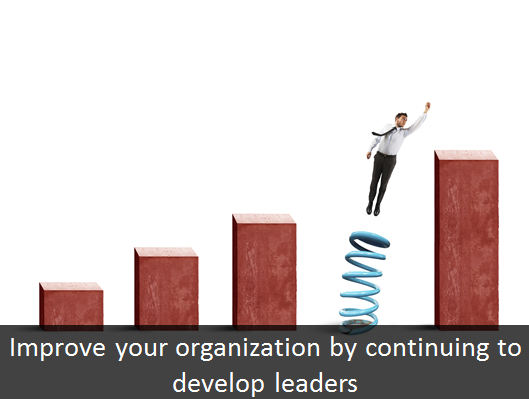Remember the concept of just in time? JIT originated as a production strategy popularized by Toyota to increase the return on investment by greatly reducing in-process inventory and all the costs that go along with it. Rather than having materials sitting around waiting to be used, companies got very specific and detailed around having materials arrive just at the time when they are needed. In the realm of manufacturing, it’s all about eliminating waste. The concept has also been applied to employee training and development, where it’s about making sure that the information and learning an employee needs is available at exactly the moment it’s most needed. However, when that concept leaks into the realm of leadership development, it becomes less useful. After all, is there ever a point at which you do not want to be developing leaders?
 Download the free white paper Through the Pipeline: Solving the Leadership “Shortage” with Leadership Pipelines
Download the free white paper Through the Pipeline: Solving the Leadership “Shortage” with Leadership Pipelines
An Aberdeen Analyst Insight report found through its research that among top organizations, as many as 57% are providing meaningful leadership development opportunities and programming for all stages of an employee’s time at the company. That indicates that the savviest organizations are shifting away from “just in time” learning for leadership development and towards something that would be better called continuous leadership development.
If you want to make leadership development a continuous part of your employee’s experience, one of the things you have to do is give them a greater degree of control over their own development. That means that in addition to formal leadership development programming, you need make a wider range of more informal options available. These might include additional coaching and mentoring opportunities, increased collaboration with subject experts, facilitating more off-site learning opportunities with a variety of stakeholders, and creating more social and mobile learning programs.
All those efforts, however, fall short of providing maximum value when participants are left clueless as to the progress they’re making. This is data that should also be provided to leaders about their team members and all direct reports. This will enable everyone to make better-informed decisions about a company’s workforce to address its changing needs.
For the developing employee, a concept closely related to JIT is continuous improvement. In John C. Maxwell’s classic book, The 21 Irrefutable Laws of Leadership, his third law is the Law of Process, by which he means that leadership is not something that happens instantaneously. It is something that develops over time. Within the context of continuous leadership development, it is best viewed as something achieved by devotion to continuous improvement. One way to do that is to engage in continuous learning, such as by keeping up with some of the latest books coming out this year about leadership.
Here are five to put on your must-read list now:
It is incumbent upon both talent management professionals and employees themselves to create as many options as possible for continuous leadership development. After all, your career and your company depend on it.
Download our The Strategic Value of Workplace Training and Development white paper
How You Can Assess The Effectiveness of Your Training – Kirkpatrick Model
Through the Pipeline: Solving the Leadership “Shortage” with Leadership Pipelines
Succession Planning – It Begins with Understanding Leadership
Leave a Reply
You must be logged in to post a comment.